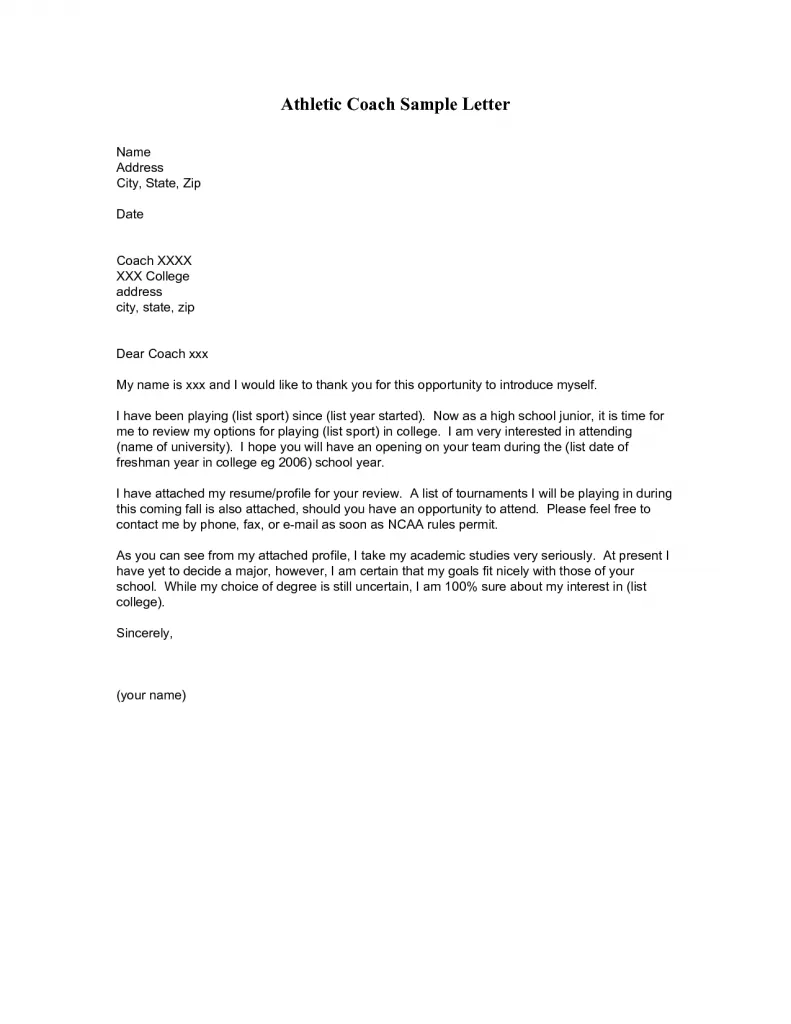Understanding the Scholarship Cover Letter
A scholarship cover letter is a crucial document that accompanies your scholarship application. It serves as your introduction, allowing you to present yourself to the scholarship committee and highlight your qualifications, experiences, and aspirations. This letter provides an opportunity to go beyond the basic information in your application and demonstrate why you are a deserving candidate. It’s your chance to showcase your personality, passion, and how the scholarship will help you achieve your educational and career goals. A well-crafted cover letter can significantly increase your chances of securing the scholarship, setting you apart from other applicants.
Why a Cover Letter Matters
In the competitive landscape of scholarship applications, a cover letter is essential. It’s your chance to make a positive first impression and provide context to your application. The cover letter allows you to explain your motivation for applying for the scholarship, elaborating on your experiences, achievements, and goals. It adds a personal touch that helps the selection committee connect with you on a deeper level. Moreover, it allows you to address any potential weaknesses in your application and highlight your unique strengths. By taking the time to write a thoughtful cover letter, you demonstrate your genuine interest in the scholarship and your commitment to your education, ultimately increasing your chances of success.
Key Elements of a Scholarship Cover Letter

A well-structured cover letter includes several key elements that work together to present a compelling case for your candidacy. These elements include your contact information, the recipient’s information, a personalized greeting, a compelling opening, a clear expression of your interest, highlights of your achievements, details about your financial need (if applicable), a discussion of your future goals, a connection of your goals to the scholarship, a strong closing, and proofreading for accuracy. Each section must be carefully crafted to convey your qualifications, passion, and suitability for the scholarship. Following this structure will make your letter clear, concise, and effective, helping you stand out from the competition.
Your Contact Information
Begin your cover letter by including your full name, address, phone number, and email address. This information should be clearly presented at the top of the letter, allowing the scholarship committee to easily contact you. Ensure that your contact information is up-to-date and professional. Use a professional email address and ensure that your voicemail message (if you have one) is appropriate. This simple step ensures that you are easily reachable and gives a positive first impression.
Recipient’s Information
Directly below your contact information, include the recipient’s details. This typically includes the name of the scholarship committee, the name of the organization or institution offering the scholarship, and their address. If a specific person is mentioned in the scholarship guidelines, address the letter to them. Researching the recipient and their role demonstrates your attention to detail and commitment to the application process.
Personalized Greeting
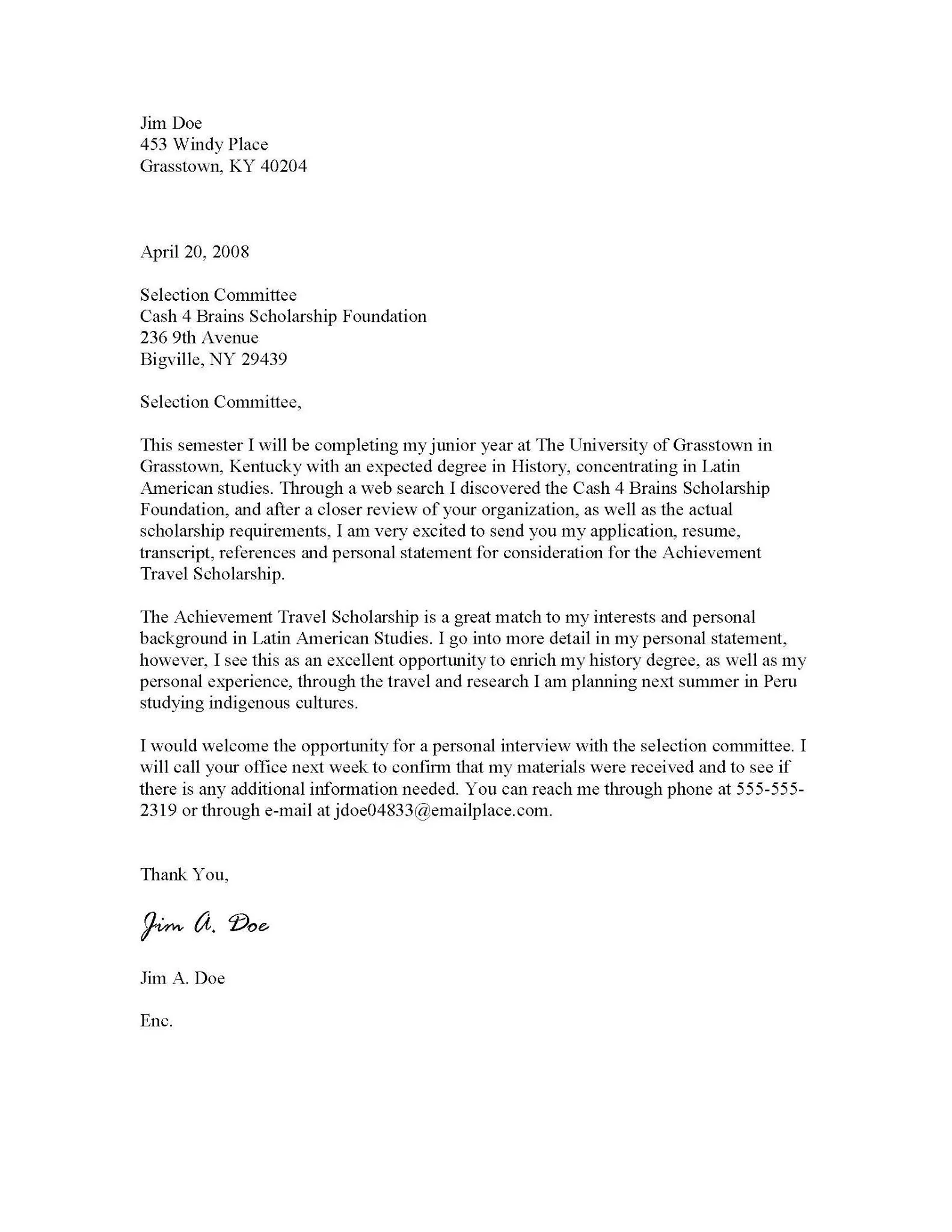
Start your cover letter with a personalized greeting. Instead of a generic salutation like ‘To Whom It May Concern,’ try to address the letter to a specific person. If the scholarship guidelines do not specify a person, research the organization to find out who the scholarship committee head is. Use ‘Dear Mr./Ms./Mx. Last Name’ to show respect. A personalized greeting shows that you’ve taken the time to research the scholarship and are genuinely interested in the opportunity. This small detail can make a big difference in making a strong first impression.
Writing a Compelling Opening
The opening paragraph is your chance to immediately capture the reader’s attention. Start with a strong statement that grabs their interest. Briefly state the scholarship you are applying for and why you are a strong candidate. Show enthusiasm for the scholarship and a clear understanding of its goals. You could mention a significant achievement, a compelling personal story, or a brief overview of your aspirations. Keep the opening concise and focused on making a positive first impression. Your aim is to hook the reader and make them want to continue reading your letter.
Expressing Your Interest
Clearly state your interest in the scholarship in a straightforward manner. Mention why you are applying for the scholarship and what aspects of the scholarship align with your goals and values. Explain what motivated you to apply, whether it is the financial aid, the opportunity to pursue your academic interests, or the organization’s mission. Express your sincere desire to be considered and connect the scholarship to your overall academic and professional aspirations. Demonstrating genuine interest in the scholarship increases your chances of being selected.
Highlighting Your Achievements
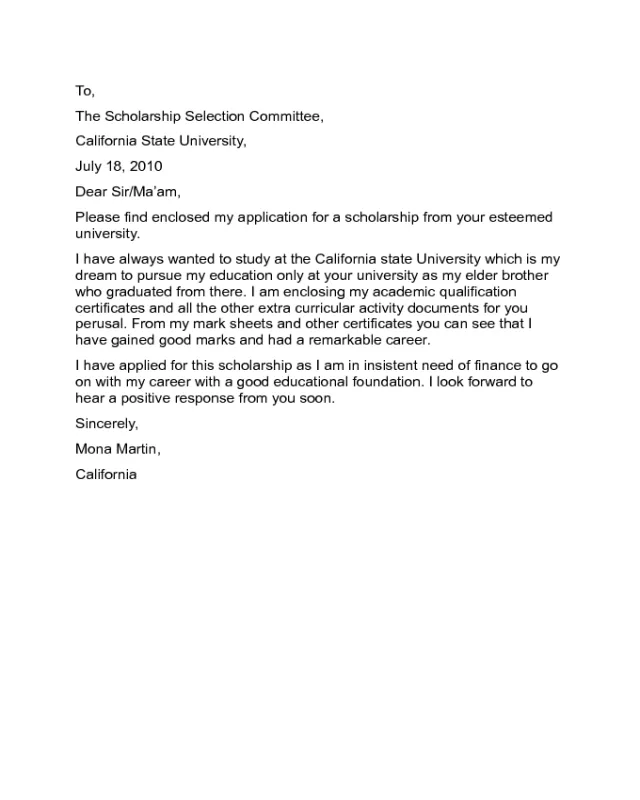
Use the body of your cover letter to highlight your achievements, both academic and extracurricular. Provide specific examples of your accomplishments, demonstrating your skills, knowledge, and character. Be sure to align your achievements with the scholarship’s criteria. Mention your grades, awards, projects, and any other academic recognitions you have received. Make sure to quantify your achievements whenever possible. Showcase how your experiences have prepared you for academic success and leadership.
Academic Accomplishments
Highlight your academic achievements, such as your GPA, class rank, and any academic awards or honors you’ve received. Discuss your course work and mention any subjects you excel in or find particularly interesting. Include details of any research projects, presentations, or academic competitions you’ve participated in. When detailing your academic accomplishments, provide concrete examples that demonstrate your knowledge, analytical skills, and commitment to learning.
Extracurricular Activities
Include the extracurricular activities you’ve been involved in, such as clubs, sports, volunteer work, and community service. Mention your roles and responsibilities within these activities, and highlight any achievements or leadership positions. Describe the skills you gained through these experiences, such as teamwork, communication, and problem-solving skills. Explain how your involvement has shaped your character and contributed to your personal growth. Extracurricular activities show your well-roundedness and commitment outside of academics.
Leadership Experiences
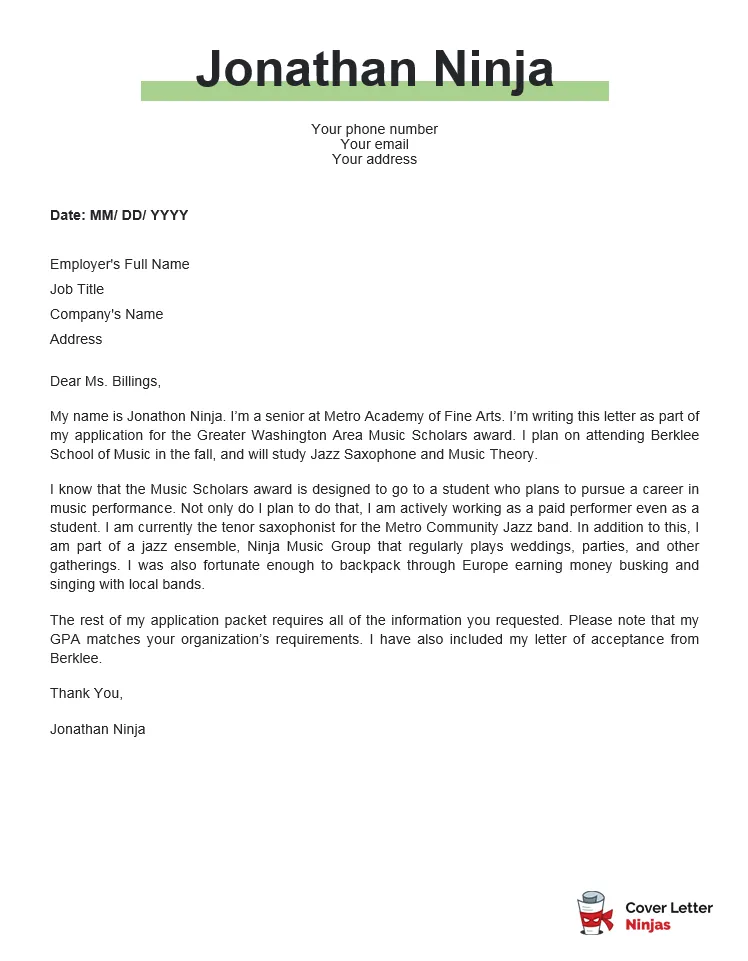
Detail any leadership experiences you’ve had, such as positions in student government, club presidencies, or team captain roles. Describe the responsibilities you held and the impact you made. Highlight your leadership qualities, such as your ability to motivate others, make decisions, and take initiative. Provide specific examples of how you led, mentored, or inspired others. Leadership experience shows that you have the ability to lead and work with others.
Financial Need (If Applicable)
If the scholarship considers financial need, provide a brief explanation of your financial situation. Explain why you need the scholarship and how the funds will help you achieve your educational goals. Be honest and provide context, such as mentioning family income, expenses, or any other relevant financial challenges. Always adhere to any specific guidelines provided in the scholarship’s application instructions. Demonstrating your financial need clearly and honestly is essential for scholarships that consider financial circumstances.
Demonstrating Your Financial Situation
When detailing your financial situation, be as specific as possible without divulging excessive personal information. Briefly describe your family’s financial situation and the challenges you face in funding your education. Mention any other sources of financial assistance you have applied for, such as loans or other grants. Provide a clear understanding of how the scholarship will help you. Ensure your explanation is clear, concise, and professional, and that it adheres to the scholarship’s guidelines.
Future Goals and Aspirations
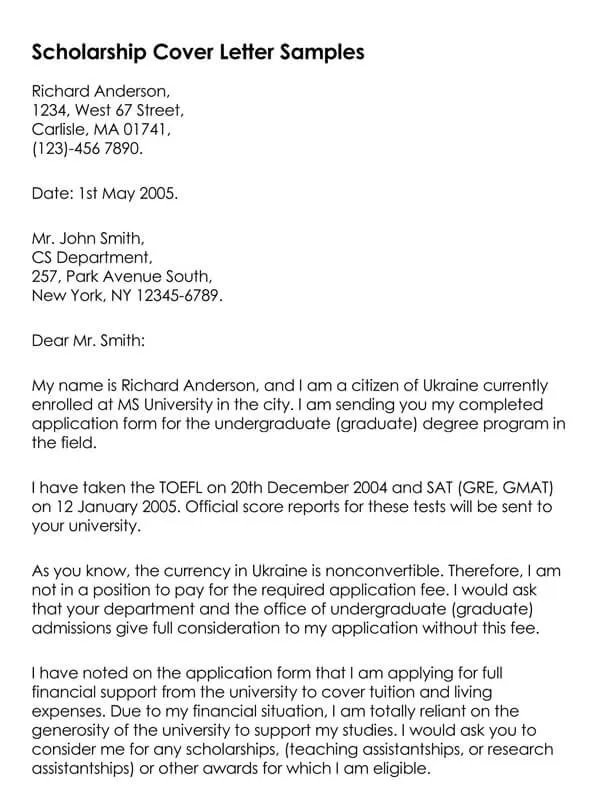
Clearly outline your future goals and aspirations. Describe your desired career path and any specific goals you have for your education and career. Share your long-term vision and how the scholarship will help you achieve it. Show how you plan to contribute to your community or field of study. Providing a clear understanding of your goals shows the selection committee that you have a clear direction and purpose.
Connecting Your Goals to the Scholarship
Show the selection committee how this scholarship will play a key role in helping you achieve your goals. Explain how receiving the scholarship will support your educational pursuits and enable you to focus on your studies and extracurricular activities. Explain how the scholarship aligns with your long-term career goals, and how it will help you become the person you want to be. This connection is vital because it shows the committee that you are genuinely interested in the scholarship and that you have a plan for its use.
Closing the Letter
End your letter with a strong and polite closing. Express your gratitude for the committee’s time and consideration. Reiterate your interest in the scholarship and your commitment to your education and career. Make sure to express enthusiasm for the opportunity. Use a formal closing, such as ‘Sincerely,’ or ‘Yours faithfully,’ followed by your full name. A strong closing leaves a lasting positive impression.
Expressing Gratitude and a Call to Action
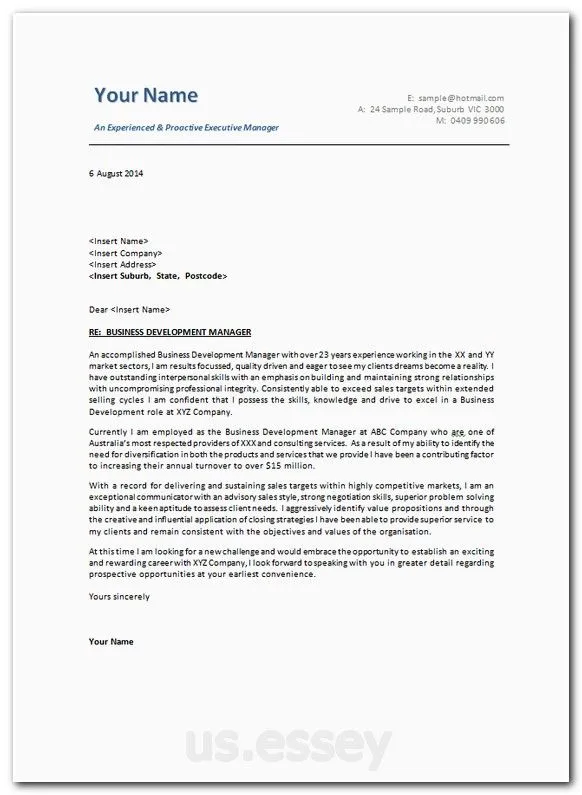
Thank the committee for their time and consideration. Restate your interest in the scholarship, and express your enthusiasm for the opportunity. If appropriate, include a call to action. Indicate your willingness to provide any further information. This shows that you are proactive and committed. Be sure to proofread the entire letter for any errors.
Proofreading and Editing
Proofread your cover letter meticulously. Check for grammar, spelling, punctuation, and formatting errors. Have a friend, family member, or teacher review your letter. Ensure the language used is clear, concise, and professional. Make sure the letter flows logically and that each paragraph contributes to your overall message. Review the letter for consistency in tone, style, and formatting. Proofreading is the final step. This demonstrates attention to detail and professionalism.
Common Mistakes to Avoid
Avoid common mistakes such as using generic language, not following instructions, and including irrelevant information. Do not use jargon, slang, or overly casual language. Ensure your letter addresses the specific requirements of the scholarship. Provide clear, concise, and specific examples to support your claims. Refrain from using clichés, and stay away from overly enthusiastic or desperate language. Avoid submitting a letter full of errors.
Using the Right Tone and Style
Maintain a professional and formal tone. Your tone should be respectful, enthusiastic, and confident. Use a clear and concise writing style. Avoid overly long sentences and complex phrasing. Your letter should be easy to read and understand. Maintain a consistent tone throughout the letter, and ensure it reflects your personality and the specific requirements of the scholarship. Your tone and style have a big impact on making a positive impression.
Formatting Your Cover Letter
Use a standard, easy-to-read font like Times New Roman or Arial, in a 12-point size. Make sure your letter has proper margins and spacing (usually 1 inch on all sides, and single-spaced with a blank line between paragraphs). Use a formal business letter format. Keep your letter to one page unless otherwise specified in the scholarship guidelines. Formatting your letter correctly makes it easy to read and shows attention to detail.
Cover Letter Template and Examples
Use a template to get a head start. There are many cover letter templates and examples available online. Use them as a guide, but ensure that your letter is personalized and reflects your unique experiences and goals. Modify templates to fit your needs, ensuring you don’t just copy, but create something that is unique to you. Carefully review multiple examples to get a better understanding of effective cover letter writing.
Cover Letter Template
Follow a standard business letter format. Include your contact information, the recipient’s information, a personalized greeting, a compelling opening, a statement of your interest, a highlight of your achievements, your financial need (if applicable), a discussion of your future goals, a connection to the scholarship, and a closing with a call to action. Using a template helps ensure you include all the necessary elements and keeps your letter organized.
Example Cover Letter 1
This example is a basic template for a high school student. It focuses on academic achievements, extracurricular activities, and future goals. It is concise and straightforward, highlighting key accomplishments and aspirations. The tone is formal and professional, and it demonstrates enthusiasm for the scholarship. Reviewing such examples offers insight into how to present yourself effectively, demonstrating your ability to follow instructions.
Example Cover Letter 2
This example showcases a cover letter tailored for a college student. It emphasizes relevant coursework, research experience, and career goals. The language is more advanced, with detailed explanations of skills and experiences. The tone remains formal, and the content highlights specific achievements relevant to the scholarship criteria. This example illustrates how to customize the approach for different academic levels, ensuring the content effectively addresses the specific requirements.
Example Cover Letter 3
This example is designed to illustrate a cover letter for a student with financial need. It provides a clear explanation of the financial situation, demonstrating how the scholarship will help. The writing is empathetic and focuses on the student’s determination to succeed despite financial challenges. The letter includes a clear description of how the scholarship will support the student’s academic pursuits. The example is tailored to show students how to address financial concerns.
Final Thoughts
Writing a compelling scholarship cover letter is an essential step in the application process. By following these guidelines, you can create a letter that effectively showcases your qualifications, demonstrates your passion, and increases your chances of securing the scholarship. Remember to tailor your letter to each scholarship, highlight your unique achievements, and always proofread carefully. Good luck!
